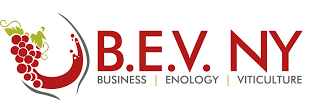The best instrument to measure overall wine quality is a real, live human- but humans are notoriously unreliable measuring instruments. To get the best information from your humans, you have to know how sensory perception works, how it varies from person to person, and when it’s likely to return bad data. In this session, we’ll learn the most common sources of human sensory variability, try some simple tasting exercises, and explore the newest discoveries on the frontier of human-wine interface…and maybe bust some wine-tasting myths along the way.
Anna Katharine Mansfield, Associate Professor, Enology, Cornell Craft Beverage Institute
Anna Katharine Mansfield is the associate director of Cornell AgriTech in Geneva, NY, where she also serves as an associate professor of enology in the Cornell Craft Beverage Institute in the Department of Food Science. She received a BA in English from Salem College and graduate degrees in Food Science at Virginia Tech and the University of Minnesota. Mansfield served as Enology Project Leader at the University of Minnesota from 2001-2008, where she developed a new enology extension program to serve the rapidly-developing cold-climate wine industry in the Upper Midwest. She spend a sabbatical leave at l’Institut Universitaire de la Vigne et du Vin Jules Guyot at the University of Burgundy investigating the potential of cork structures to sorb wine flavor compounds. Dr. Mansfield has been a member of the Cornell Enology Extension Lab since 2009, where she strives to aid regional wineries through outreach and applied research on wine phenolics and proteins, sensory perception, impact odorants, and regional typicity.


